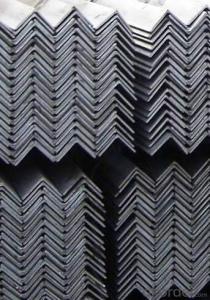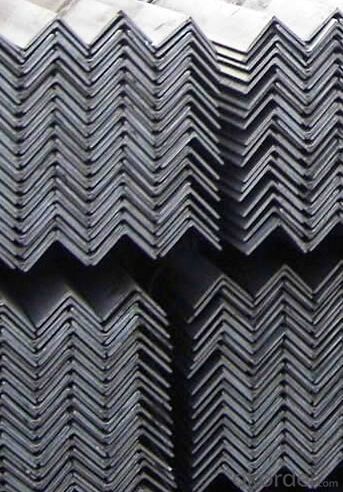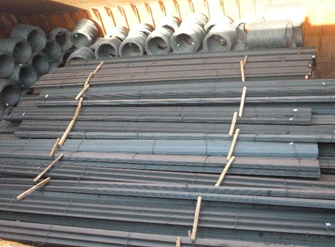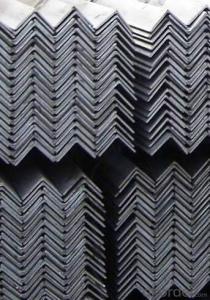HIGH QUALITY GB STANDARD HOT ROLLED ANGLE REBAR
- Loading Port:
- Tianjin
- Payment Terms:
- TT OR LC
- Min Order Qty:
- 50 m.t.
- Supply Capability:
- 5000 m.t./month
OKorder Service Pledge
OKorder Financial Service
You Might Also Like
Product Description:
Specifications of Hot Rolled Steel Rebar:
The production process of Steel Rebar
1-Waling beam furnace 2-Roughing rolling group 3-Intermediate rolling train
4-Finishing rolling group 5-Water-cooling device 6-Walking beam cooler
7-Finishing equipment(including the cold scale shear,short feet collection system,
automatic counting device,bundling machine, collect bench)
Usage and Applications of Hot Rolled Steel Rebar:
Deformed bar is widely used in buildings, bridges, roads and other engineering construction. Big to highways, railways, bridges, culverts, tunnels, public facilities such as flood control, dam, small to housing construction, beam, column, wall and the foundation of the plate, deformed bar is an integral structure material. With the development of world economy and the vigorous development of infrastructure construction, real estate, the demand for deformed bar will be larger and larger..
Packaging & Delivery of Hot Rolled Steel Rebar:
Packaging Detail: products are packed in bundle and then shipped by container or bulk vessel, deformed bar is usually naked strapping delivery, when storing, please pay attention to moisture proof. The performance of rust will produce adverse effect.
Each bundle weight: 2-3MT, or as required
Payment terms: TT payment in advance or Irrevocable LC at sight.
Trade terms :FOB, CFR, CIF
Label:to be specified by customer, generally, each bundle has 1-2 labels
Note:
1. Our products are produced according to national standard (GB), if not, supply according to national standards (GB) or agreement as customer required.
2. Other Grade and Standard Deformed Steel Bar we can supply:
Q235
The Minimum Order Quantity of these products is high, and need to be confirmed.
3. We can not only supply Deformed Steel Bar; if you need anything about building materials, please contact us for further information.
4. Please send us your detail specifications when inquire. We will reply to you as soon as possible. We sincerely hope we can establish a long stable business relationship.
- Q: What is the maximum allowable torsional buckling stress for a steel angle?
- The maximum allowable torsional buckling stress for a steel angle depends on various factors such as the material properties, angle dimensions, and the specific design code or standard being followed. Therefore, without specific information, it is not possible to provide a definitive answer. It is recommended to consult the relevant design code or a structural engineer to determine the maximum allowable torsional buckling stress for a steel angle.
- Q: Can steel angles be used for framing or supporting exterior cladding systems?
- Yes, steel angles can be used for framing or supporting exterior cladding systems. Steel angles provide structural support and stability, making them suitable for this purpose. They can be used to create a framework or support structure for exterior cladding systems, ensuring durability and architectural integrity.
- Q: How do you straighten a bent steel angle?
- To straighten a bent steel angle, you can use a combination of manual force and mechanical aids. First, secure the angle in a vice or clamp it to a sturdy surface. Then, gently apply pressure in the opposite direction of the bend using a mallet or hammer. For more complex bends, you may need to use a hydraulic press or a bending machine. It is important to apply gradual force and check the angle's alignment frequently to avoid over-straightening or damaging the steel.
- Q: Can steel angles be used in residential construction?
- Indeed, residential construction can make use of steel angles. These versatile structural elements find widespread application in various construction projects, including residential buildings. They are commonly employed for framing, reinforcing, and providing structural support in walls, roofs, and floors. In residential construction, steel angles are favored due to their notable strength, durability, and capacity to withstand heavy loads. Their ease of installation, whether by welding, bolting, or screwing, renders them suitable for a wide array of construction endeavors. Furthermore, the corrosion resistance of steel angles can be enhanced through galvanization or coating, assuring their longevity. In essence, steel angles present a dependable and cost-effective option for residential construction.
- Q: How do you protect steel angles from weathering?
- There are various effective methods available for protecting steel angles from weathering. The primary approach involves the application of a specially designed coating or paint that is intended for steel surfaces. This coating acts as a barrier, preventing direct contact between moisture, oxygen, and the steel, thereby reducing the likelihood of rust formation. It is crucial to select a weather-resistant coating that offers long-term durability. Before applying the protective coating, it is essential to thoroughly clean the steel angles to eliminate any dirt, grease, or existing rust. This can be accomplished through abrasive cleaning techniques such as sandblasting or by using a wire brush. Once the cleaning process is complete, the surface should be primed with a corrosion-resistant primer, which improves the adhesion of the protective coating. Regular maintenance is also vital to ensure the continuous protection of steel angles from weathering. This involves periodically inspecting the coating for any signs of damage or wear and promptly addressing any issues that arise. Touching up areas where the coating has been compromised is necessary to maintain the integrity of the protective layer. In addition, proper design and installation techniques can contribute to protecting steel angles from weathering. It is crucial to ensure that the angles are adequately sealed and shielded from direct exposure to rain, snow, or other sources of moisture. This can be achieved by implementing appropriate drainage systems, such as gutters or downspouts, to redirect water away from the steel angles. Lastly, considering alternative materials or coatings that possess inherent resistance to weathering, such as stainless steel or galvanized steel, can provide an additional layer of protection against environmental elements. These materials have higher corrosion resistance and are more suitable for outdoor applications where weathering is a concern. By implementing a combination of protective coatings, regular maintenance, proper design, and the utilization of weather-resistant materials, steel angles can be effectively safeguarded from weathering while maintaining their structural integrity over an extended period.
- Q: What is the process of galvanizing steel angles?
- To protect steel angles from corrosion, the galvanizing process encompasses multiple steps. Initially, the angles undergo a thorough cleaning process to eliminate any dirt, oil, or rust on the surface. This is achieved through pickling, wherein the angles are immersed in a solution of acid, usually hydrochloric acid, to eliminate impurities. Subsequently, the cleaned steel angles are rinsed to eliminate any remaining acid and are then dried meticulously. This step is crucial to ensure proper adhesion of the zinc coating. Following the cleaning process, the steel angles are immersed in a bath containing molten zinc. This is known as hot-dip galvanizing, where the angles are completely submerged in the zinc bath. The temperature of the bath typically reaches around 840°F (449°C). While the steel angles are immersed in the zinc bath, a metallurgical reaction occurs between the molten zinc and the steel. Consequently, a layer of zinc-iron alloy is formed on the surface of the angles. This layer offers exceptional resistance against corrosion and acts as a barrier between the steel and the corrosive elements present in the environment. Once the angles have been fully immersed in the zinc bath, they are removed and allowed to cool. The cooling process solidifies the zinc coating and ensures its adherence to the steel angles. Finally, the galvanized steel angles undergo a comprehensive inspection to ensure quality control. This involves examining the thickness, uniformity, and adherence of the coating to the angles. Various tests and measurements are conducted to verify that the galvanized coating meets the required standards and specifications. Overall, the galvanizing process for steel angles involves cleaning, immersion in a molten zinc bath, cooling, and inspection. This process yields a robust and long-lasting protective coating on the steel angles, enhancing their resistance to corrosion and extending their lifespan.
- Q: Can steel angles be used in telecommunications tower constructions?
- Yes, steel angles can be used in telecommunications tower constructions. Steel angles are commonly used as structural components in various construction applications, including telecommunications towers. They provide strength, stability, and support to the tower structure. Steel angles can be welded or bolted together to form the framework of the tower, providing a sturdy and durable structure capable of withstanding the weight of the tower and its equipment. Additionally, steel angles can be easily fabricated and customized to meet the specific design and engineering requirements of the telecommunications tower.
- Q: Can steel angles be used in architectural sculptures and installations?
- Yes, steel angles can be used in architectural sculptures and installations. Steel angles are versatile and commonly used in construction due to their strength and durability. They can be easily welded, bolted, or attached using other methods, making them ideal for creating intricate and complex structures. Steel angles can be shaped and formed into various angles and curves, allowing for creative and unique designs in architectural sculptures and installations. Additionally, steel angles can be finished with different coatings or paints to enhance their aesthetic appeal and protect them from corrosion, making them a suitable choice for both indoor and outdoor installations. Overall, steel angles offer the necessary strength, flexibility, and aesthetic possibilities required for architectural sculptures and installations.
- Q: Can steel angles be used for architectural detailing or ornamentation?
- Yes, steel angles can be used for architectural detailing or ornamentation. They are commonly used to add structural support, create unique design elements, and enhance the aesthetic appeal of buildings. Their versatility, strength, and durability make them suitable for various architectural applications.
- Q: What are the different methods of surface preparation for steel angles before painting?
- There are several methods of surface preparation for steel angles before painting. The choice of method depends on the condition of the steel surface and the desired level of paint adhesion and durability. One common method is abrasive blasting, also known as sandblasting. This involves propelling abrasive particles against the steel surface to remove rust, mill scale, and other contaminants. Abrasive blasting not only cleans the surface but also creates a rough profile, which improves the adhesion of the paint. Chemical cleaning is another method used to prepare steel angles for painting. It involves the use of chemical solutions or solvents to remove grease, oil, and other organic contaminants. This method is particularly useful for removing stubborn contaminants that cannot be removed by abrasive blasting alone. Mechanical cleaning methods, such as wire brushing or grinding, can be used to remove loose rust, scale, and old paint. These methods are suitable for smaller areas or localized rust spots. In some cases, power tool cleaning may be sufficient. This involves using power tools such as grinders, sanders, or wire brushes to clean the steel surface. However, it is important to ensure that these tools do not create a polished or smooth surface, as this can reduce paint adhesion. After the surface has been cleaned, it is important to remove any residual contaminants by using a solvent wipe or a clean cloth soaked in a suitable solvent. This step ensures that the surface is free from any remaining contaminants that could affect the paint adhesion. Finally, the steel angles should be primed before painting. A primer provides additional corrosion protection and enhances the adhesion of the topcoat. The choice of primer depends on the specific requirements of the project, such as exposure to harsh weather conditions or chemical exposure. Overall, the different methods of surface preparation for steel angles before painting include abrasive blasting, chemical cleaning, mechanical cleaning, power tool cleaning, solvent wiping, and priming. Selecting the appropriate method ensures that the paint adheres well to the steel surface and provides long-lasting protection against corrosion.
Send your message to us
HIGH QUALITY GB STANDARD HOT ROLLED ANGLE REBAR
- Loading Port:
- Tianjin
- Payment Terms:
- TT OR LC
- Min Order Qty:
- 50 m.t.
- Supply Capability:
- 5000 m.t./month
OKorder Service Pledge
OKorder Financial Service
Similar products
Hot products
Hot Searches
Related keywords
